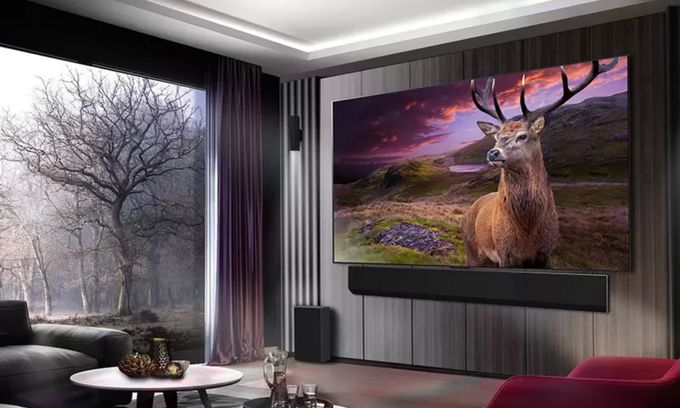Probably, this year completes the next technological cycle of TV improvement. Indeed, the development level of the three most popular technologies, including OLED, LCD TVs with quantum dot technology and miniLED backlight, and models with hybrid QD-OLED panels, is almost equal. At a commensurate price, models based on them provide approximately the same image quality.
To be fair, this list also includes microLED panels and ‘laser TVs’. MicroLED technology offers amazing quality at a fantastic price. As known, Samsung dominates this segment. At CES 2023, the company announced the new ‘affordable’ Micro LED CX series.
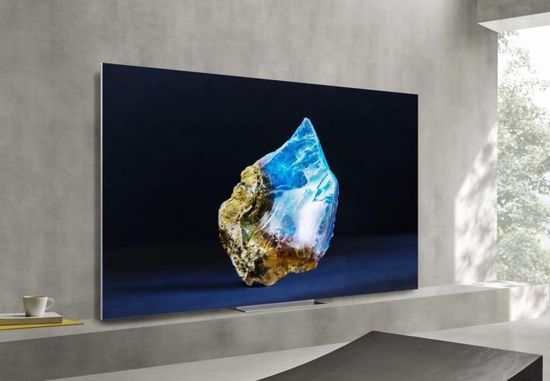
This technology uses separate GaN-based self-emitting LEDs for each pixel, providing impeccable image quality through high brightness and phenomenal contrast ratio. Unfortunately, it requires a very expensive and complex control system. Today, Samsung Advanced Institute of Technology is successfully developing multiple-sapphire nanomembrane (MSNM) technology, which can drastically reduce the cost of micro-LED manufacturing. Unfortunately, the announced series is not yet available, and its estimated price starts at $ 50,000. Accordingly, its comparison with competitors is not relevant yet.
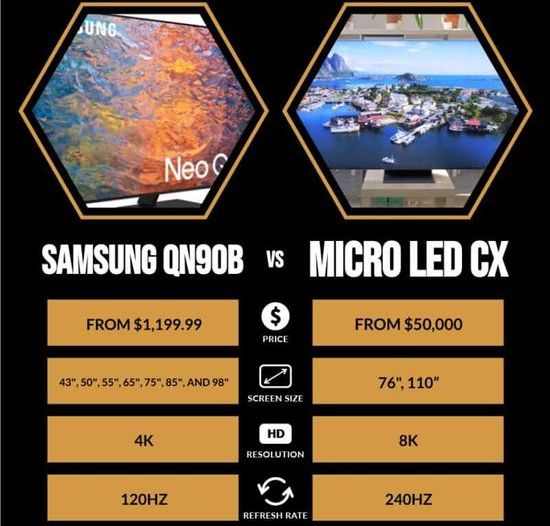
The prospects for competition between TVs and ‘laser TVs’ are discussed below.
Laser TVs
Perhaps ‘Laser TVs’ is a term that will elicit a skeptical smile from some physicists. Formally, any projector with a built-in TV receiver can be positioned as a TV with a screen outside the case. But Sony, Epson, BenQ and other prefer to call similar models laser projectors. Today, the developers have successfully solved some main problems:
– Ultra Short Throw (UST) models.
They project 100″ and more image from only a few tens of centimeters away, eliminating the problem of traditional mid-focal projectors with wires on the floor.
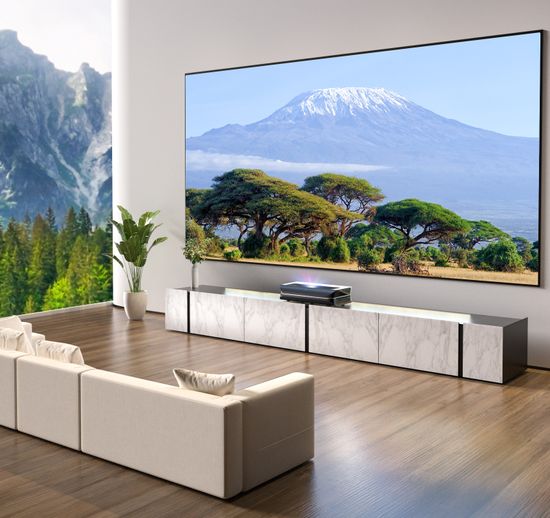
– screen mirroring and streaming eliminated the content problem;
– the solid-state light (SSL) sources with LEDs or laser LEDs (LED with an optical cavity).
SSL-based ALPD (Advanced Laser Phosphor Display) technology expanded their color gamut;
– pixel shift-based XPR (Xpanded Pixel Resolution) technology has significantly reduced the price of 4K DLP projectors, enabling the display of 4K content using relatively cheap 1080p DMD chipsets.
Partial list of new UST laser projectors:
–BenQ V5000i – $ 3,500;
–Philips Screeneo U5 – € 3,500;
–Visionair-e Platinum Vision 3000 – $ 3,750;
– LG HU715Q – $ 3,000;
–Epson EB-810E – $ 3,300;
– Epson EpiqVision Ultra LS800 – $ 3,120;
– CHiQ B8U and B7U – $ 3,120 and up to $ 2,000;
–Hisense PL1 – € 2,085;
–Hisense PX1-PRO – $ 2,700.
But TVs are brighter and more contrast, and 100″-150″ screen is oversized for the size of many living rooms. Moreover, TVs makers are also increasing screen sizes. For example, this year the range of huge TVs has expanded with 98″ Samsung 98Q80C ($ 6,600-$ 7,000 launch price). Its price is quite commensurate with last year’s 98″ TCL 98R754 at ~$ 5,000.
QD, mini LED and OLED Evo
In fact, the rapid progress of LCD, OLED and QD-OLED TVs в основном is based on several innovative technologies, including quantum dots (QD), miniLED backlight and OLED Evo panel.
QD technology increases the brightness and accuracy of colors, and expands the color gamut by greatly improving white quality to backlight of RGB filter. In fact, it generates white from blue red and green. Blue is emitted by the rear LEDs array. The red and green are re-emitted by microparticles on the additional film, which is located between the blue backlight matrix and the RGB filter. Their size corresponds to wavelengths of red and green. By partially absorbing the blue, the microparticles re-emit red and green. Behind the film, they are mixed with blue, forming a high quality white.
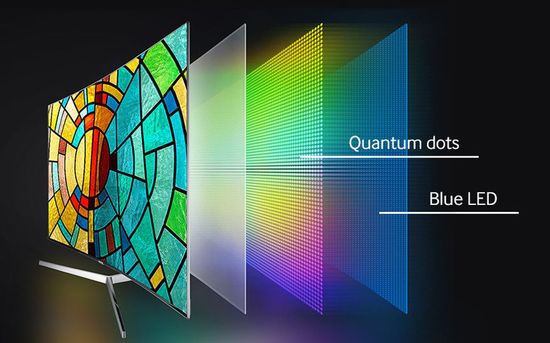
MiniLED backlit was the second breakthrough in the LCD TV evolution. Using a huge number of miniature LEDs, the developers have radically increased the number of independent local dimming zones. In turn, a sharp increase in their number increased the overall image contrast by improving the accuracy of brightness control in different frame zones.
OLED Evo panel first unveiled in LG OLED G1. Using an additional third green emitter layer and deuterium instead of hydrogen in blue emitters allowed the developers to increase the peak brightness of the panel by increasing voltage. As a result, the peak brightness of G1 exceeded 1,000 nits. Last year’s Brightness Booster verion in the G2 uses a heat sink on the back of the TV. The additional heat dissipation allowed the developers to increase the panel brightness without the risk of pixel degradation due to overheating. The peak brightness of the new C3 and G3 is even excessive for HDR mode.
HDR performance
Traditionally, image quality is the main criterion for evaluating any TV. Together with the price, it determines the value for money, which is the main selection criterion. But this aspect has some nuances.
As known, cable networks and satellite TV today mainly offer SDR content, which is due to the bandwidth of networks. It’s reproduced in high quality even by mid-budget models. HDR is only available on expensive Netflix subscriptions or on blu-ray discs. It’s especially colorful in scenes with a lot of bright small details against a black background. Therefore, companies often demonstrate the capabilities of flagship models by demonstrating a night metropolis or a starry sky.
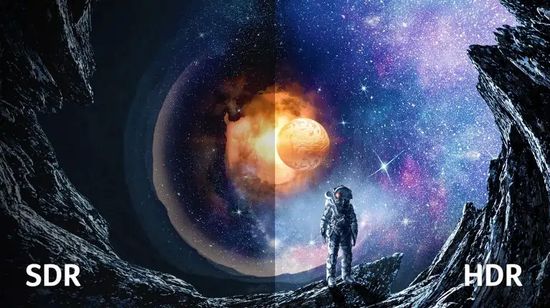
In fact, today HDR performance has become one of the main criteria in the flagship TVs segment. In turn, it mainly depends on the peak brightness and contrast. Accordingly, these specs are one of the main ones when comparing models in the premium segment.
Of course, the TV evaluation depends on many factors, including audio technologies, gaming options (input lag, ALLM, VRR support, number of HDMI connectors, etc), OS (smart functionality and UI), the efficiency of video processing algorithms, which, of course, depends on processor performance, etc. But all modern flagship series in the premium segment usually offer very high level.
Perhaps Sony, Samsung and LG have more experience than Chinese giants Hisense and TCL. For example, a partial list of the Japanese giant includes Cognitive Processor XR, BRAVIA CAM, Dual Database Processing, Acoustic Surface Audio and Multi-Audio, Pixel Contrast Booster, Backlight Master Drive, X-tended Dynamic Range, etc. The lists of South Korean giants are no less impressive. The list of innovative solutions in Hisense and TCL TVs is significantly shorter, but this aspect is more than offset by the significant difference in their prices.
OLED and QD-OLED TVs 2023
OLED (for 65″ models)
1 – LG G3 OLED Evo ~ $ 3,150, improved version of last year’s LG G2 OLED Evo ($ 1,900);
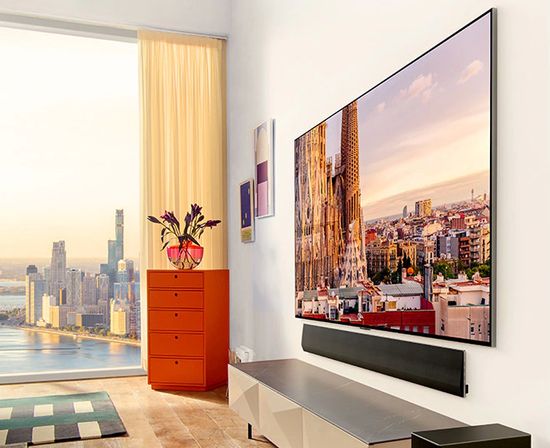
– inf:1 (‘infinite’) contrast without backlight;
– peak HDR / SDR brightness – range from 230 / 300 cd/m² (or nits) for 100% window to 1,450 / 610 nits for 10% window;
2 – LG C3 OLED Evo ~ $ 2,200, improved version of LG C2 OLED Evo ($ 1,600);
– inf:1 contrast;
– peak HDR / SDR brightness – 200 nits – 830 / 410 nits (100% – 10% windows);
3 – Sony A80L OLED ~ $ 2,065, replaces 2022’s Sony A80K OLED (latest Cognitive Processor XR, Google TV, exclusive gaming features for Playstation 5, etc):
– inf: 1 contrast;
– peak HDR / SDR brightness – 170 nits – 650 / 380 nits (100% – 10% windows).
QD-OLED (for 65″ models)
1 – Sony A95L ~ $ 3,500, improved version of last year’s Sony A95K ($ 2,800);
– inf:1 contrast;
– brightness – unknown.
According to the company, the additional heat diffusion sheet and new algorithm of thermal analysis should deliver twice the peak brightness vs 1,000 nits of last year’s A95L.
2 – Samsung S95C ~ $ 3,000, improved version of last year’s S95B ($ 1,650);
– inf:1 contrast;
– peak HDR / SDR brightness – 260 / 250 nits – 1,350 / 630 nits (100% – 10% windows);
3 – Samsung S90C ~ $ 2,100, improved version of last year’s S90B ($ 1,600);
– inf:1 contrast;
– peak HDR / SDR brightness – 210 nits – 1,050 / 500 nits (100% – 10% windows).
QLED MiniLED
(for 65″ models)
1 – Samsung QN95C – unavailable;
2 – Sony X93L ~ $ 2,000;
– 2,159 : 1 native contrast and 73,818 : 1 contrast ratio with local dimming (1200 zones);
– peak HDR / SDR brightness – 670 / 660 nits – 1,370/ 1,370 nits;
3 – Samsung QN90C ~ $ 2,000, improved version of last year’s QN90C ($ 1,600);
– 1,674 : 1 native contrast and 83,200 : 1 contrast ratio with local dimming (720 zones);
– peak HDR / SDR brightness – 690 / 660 nits – 2,000 / 1,800 nits (100% – 10% windows);
4 – Samsung QN85C ~ $ 1,700, improved version of last year’s QN90B ($ 1,300);
– 834 : 1 native contrast and 87,391 : 1 contrast ratio with local dimming (720 zones);
– peak HDR / SDR brightness – 630 / 660 nits – 1,050 / 1,000 nits (100% – 10% windows);
5 – TCL QM8 (only available in North America) ~ $ 1,200;
– fantastic 114,057 : 1 contrast ratio with local dimming (up to 2300 zones);
– peak HDR / SDR brightness – 860 nits – 2,000 nits (100% – 10% windows);
6 – Hisense U8K ~ $ 1,100;
– 5,000:1 native contrast and fantastic 2,000,000:1 contrast ratio with local dimming (1008 zones);
– peak brightness up to 1,500 nits;
7 – Hisense U7K ~ $ 730;
– 6,374 : 1 native contrast and 10,974 : 1 with local dimming (384 zones);
– peak brightness up to 1,000 nits;
8 – Hisense U6K ~ $ 650 – $ 800;
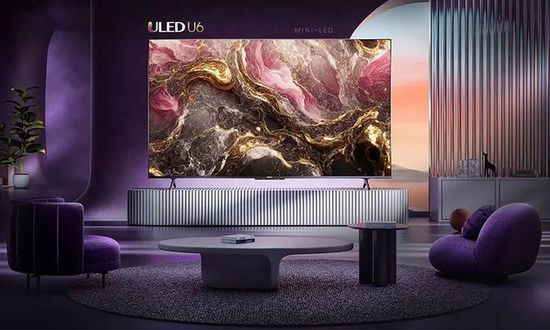
– 1,200:1 native contrast and 39,400:1 contrast ratio with local dimming (192 zones);
– peak brightness up to 600 nits.
Conclusion
Traditionally, OLED and QD-OLED TVs have more contrast vs LCD models – (inf:1) contrast vs ~ (1,000:1-5,000:1) native contrast, and (10,000:1 – 2,000,000:1) with local diming.
But LCDs are cheaper and brighter – ($ 650 – $ 2,100) vs ($ 2,100 – $ 3,150) for 65″ models, and up to 2,000 nits vs (650 -1,500) nits peak brightness.
The redundancy of their specs for most of the available content is becoming a key feature of the flagship segment. Indeed, (inf:1) contrast is objectively max. But 10,000, 50,000 or 100,000:1 contrast with local dimming also ensures near-perfect playback of SDR content and most HDR content. Perhaps a sharp-eyed viewer will distinguish the difference when reproducing a starry sky or a night metropolis, but their share is negligible in the total content.
The situation with peak brightness is similar. Even 600 nits is overkill for SDR content. HDR mode works great from 600-800 nits. Realistically, high brightness can only be useful when viewed in direct sunlight to compensate for ambient light. But for comfortable viewing on a terrace villa, companies offer outdoor TVs, including, for example, Samsung Terrace series.
Prices also behave strangely. Regardless of the technology, they are very close for Sony, Samsung and LG models, but almost twice as high vs Hisense and TCL. Of course, the Japanese and South Korean giants traditionally offer a huge list of additional options and technologies, but a twofold difference with identical specs seems overkill. This factor creates excellent marketing prospects for Hisense U8K / U7K / U6K and TCL QM8 with superb value for money.
This video presents Sony A95L BRAVIA XR QD-OLED 4K TV.
